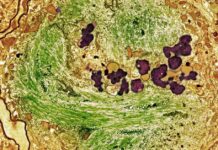Extreme heatwaves are becoming more frequent and intense, posing a significant threat to public health and safety. As temperatures continue to rise due to climate change, experts are urging for new methods to monitor and track these extreme heat events. The traditional methods of monitoring heatwaves are no longer sufficient, and innovative approaches are needed to better understand and respond to the challenges posed by these increasingly common weather phenomena.
Challenges of Traditional Heatwave Monitoring
Traditionally, heatwaves have been monitored using a combination of temperature data, heat indices, and weather forecasts. While these methods can provide some insight into the intensity and duration of heatwaves, they often fail to capture the full impact of extreme heat on human health and infrastructure. In recent years, we have seen record-breaking heatwaves causing widespread power outages, wildfires, and heat-related illnesses. This highlights the need for more comprehensive and accurate monitoring of extreme heat events.
One of the challenges of traditional heatwave monitoring is the lack of standardized criteria for defining and measuring heatwaves. Different regions and organizations may use varying thresholds for what constitutes a heatwave, making it difficult to compare and analyze data across different locations. This inconsistency in monitoring standards can hinder efforts to track and respond to heatwaves effectively.
The Need for New Monitoring Methods
To address these challenges, experts are calling for the development of new methods for monitoring and tracking extreme heat events. One promising approach is the use of satellite data and remote sensing technology to monitor surface temperatures and heat stress in real-time. By leveraging satellite imagery and advanced analytics, researchers can gain a more comprehensive understanding of how heatwaves are evolving and impacting different regions.
Another innovative method for monitoring heatwaves is the use of urban heat island mapping. Urban areas tend to experience higher temperatures than surrounding rural areas due to the abundance of concrete and asphalt, which absorb and retain heat. By mapping urban heat islands, researchers can identify areas that are most vulnerable to extreme heat and develop targeted interventions to mitigate the effects of heatwaves on vulnerable populations.
In addition to technological advancements, experts are also emphasizing the importance of community-based monitoring and citizen science initiatives. Engaging local residents in monitoring and reporting heatwave impacts can provide valuable data and insights that may not be captured by traditional monitoring methods. Community members can help identify heat-related health risks, assess the effectiveness of heat mitigation strategies, and raise awareness about the impacts of extreme heat on their neighborhoods.
Implications for Public Health and Policy
The development of new methods for monitoring extreme heatwaves has significant implications for public health and policy. By improving our ability to track and predict heatwaves, we can better prepare for and respond to the health risks associated with extreme heat. Heatwaves are a leading cause of weather-related mortality and morbidity, particularly among vulnerable populations such as the elderly, children, and individuals with pre-existing health conditions. By implementing more effective heatwave monitoring strategies, we can reduce the impact of heat-related illnesses and deaths.
In addition, the data collected through new monitoring methods can inform policy decisions related to urban planning, infrastructure development, and public health interventions. By identifying heat-prone areas and populations, policymakers can prioritize resources and investments to protect vulnerable communities from the impacts of extreme heat. This includes implementing heat mitigation strategies such as cool roofs, green spaces, and public cooling centers to reduce the heat island effect and provide relief during heatwaves.
Overall, the call for new methods for monitoring extreme heatwaves underscores the urgent need to address the growing threat of extreme heat in a changing climate. By leveraging technological advancements, community engagement, and data-driven approaches, we can better understand, track, and respond to the challenges posed by heatwaves. It is essential that we take proactive measures to protect public health, enhance resilience to extreme heat, and build more sustainable and climate-resilient communities for the future.

















